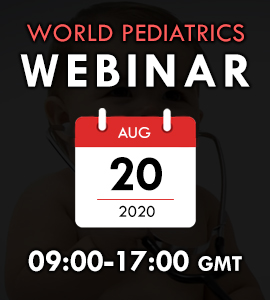
Kang Young Choi
Kyungpook National University,Korea
Title: The effects of helmet therapy, relative to the size of the anterior fontanelle in patients with nonsynostotic plagiocephaly: a retrospective study
Biography
Biography: Kang Young Choi
Abstract
Background:
Many studies have reported on the importance of treating patients with nonsynostotic plagiocephaly using helmets, a non-surgical treatment. We retrospectively examined the effects of helmet therapy according to the size of the anterior fontanelle.
Methods:
We enrolled 200 patients with nonsynostotic plagiocephaly who received helmet therapy between January 1, 2016 and December 31, 2018. We collected data pertaining to age at treatment initiation and treatment duration. We measured anterior fontanelle size using X-ray imaging and divided patients into one of three groups according to the structure’s size. Group A was 0~25%, Group B was 25~75%, and Group C was 75~100% of anterior fontanelle size. Helmet treatment feasibility was evaluated using Cranial vault asymmetry (CVA), Cranial vault asymmetry index (CVAI), Anterior symmetry ratio (ASR), Posterior symmetry ratio (PSR), and Overall symmetry ratio (OSR) at baseline and at the end of the treatment. (Fig. 1,2,3)
Results:
The average starting age was 20 w (12–40 w). The mean treatment period was 13 w (10–24 w). Group A had 53 cases, Group B had 102, and Group C had 45. The CVA differences between groups were 6.8mm (A & B), 9.5mm (A & C), and 2.7mm (B & C). The CVAI differences between the groups were 7.28% (A & B; p=0.001), 8.9% (A & C; p=0.003), and 1.62% (B & C; p=0.381). There were no interval changes for ASR in Group A; Group B changed 1% from 0.9 to 0.91, Group C changed 2% from 0.89 to 0.91. For PSR, Group A changed 6%, from 0.82 to 0.88; Group B changed 10%, from 0.79 to 0.89; and Group C changed 17%, from 0.73 to 0.9. In Group A, OSR changed 5%, from 0.85 to 0.90; in Group B, it changed 9%, from 0.81 to 0.90; and in Group C it changed 13%, from 0.78 to 0.91. There was no difference in the effects of helmet therapy according to the sex of each group.

